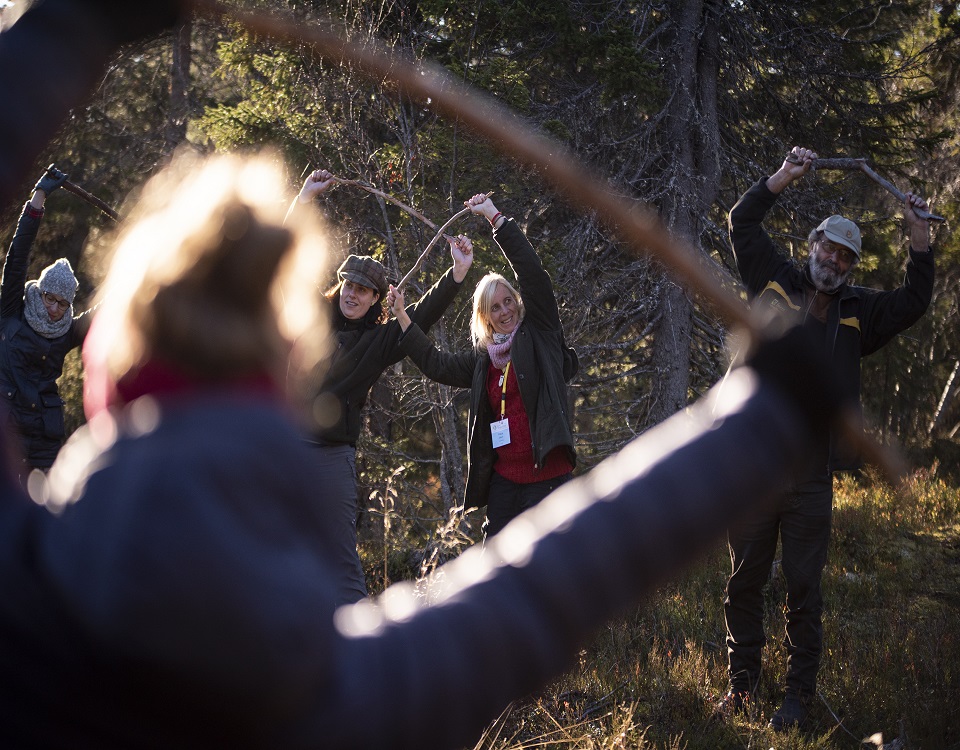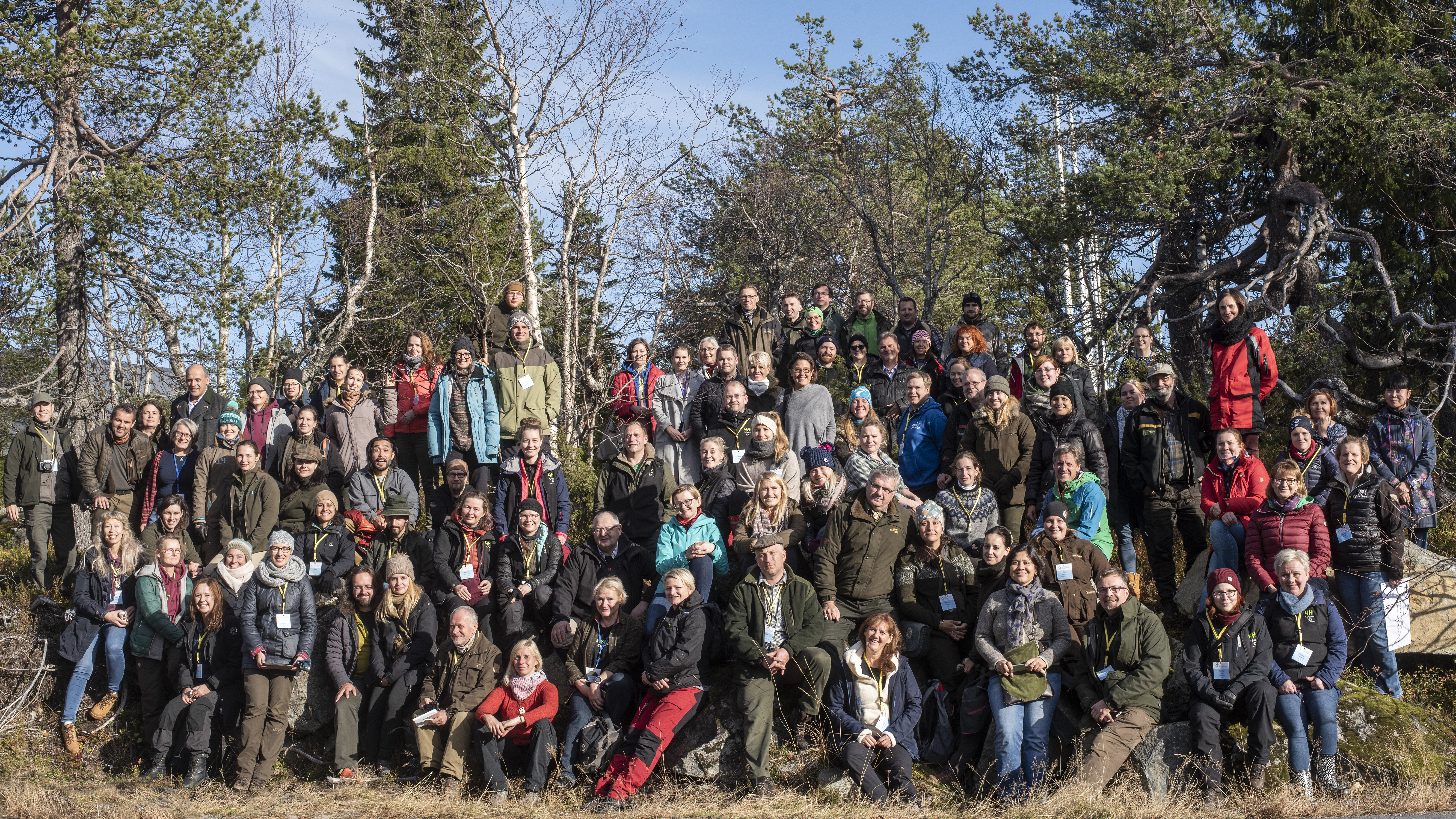TOGETHER in Forest Pedagogy

Photo report from the 13th European Forest Pedagogics Congress
11. October 2018
The Forestry Extension Institute in Ethiopia
27. November 2018
13th European Forest Pedagogics Congress (photo: Vilma Issakainen, Finish Forest Association)
The 13th European Forest Pedagogics Congress 2018
TOGETHER in Forest Pedagogy - How to involve and participate children and youth in learning, decision making and planning
Pudasjärvi, Finland, 2-5 October 2018
Author: Schmechel Dirk, Bavarian State Institute of Forestry (LWF), Germany
F rom 2nd to 5th October the European Forest Pedagogy Network (Subgroup of FCN/FAO) held its 13th annual congress in Pudasjärvi (Finland). 100 participants from 17 European states, Japan and China joined the conference and for one day more than 50 pupils mainly from secondary classes, aged from 15 to 18, were integrated in the workshops. The Finish Forest Association and the Finish 4H Federation, financially supported by the Finish Forest Foundation, organized and hosted the Congress.
It was the first time in the in the history of Congresses, that teenagers and students joined as participants. So the congress-motto “Together - How to involve and participate children and youth in learning, decision making and planning” was practically realized. This dedicates to the global objectives of the Agenda 2030 and its 17 Sustainable Development Goals (SDGs) and the World-Action-Program (WAP) for Education for Sustainable Development (ESD). The WAP as well as the SDG´s are highlighting teenagers and young adults as the “change agents” for being decision-makers for a liveable future in order to cope with the increasing worldwide challenges.
In 4 keynotes – reciprocally complementing each other - highranking scientists and experts for education delivered important findings and proposals, how to connect Forestpedagogy with participatory – concepts.
Marjaana Manninen (Counsellor of Education at the Finnish National Agency for Education)
presented the new finish national Core curriculum in which ESD has high priority. So the curricula as well encourages schools and teachers to use outdoor – learning surroundings, as to place high emphasis on pupil’s participation. It also mandates the schools to foster intensively on partnerships with the surrounding regional and local society and their interest-groups. The curricula highlights new approaches in learning like “Phenomenon based learning” or “Multidisciplinary education modules” combining different subjects with project-orientated teaching methods. This might be done in some other European states too, but the finnish way of implementing these objectives is totally different and highly participatory: The curricula isn´t given to the schools by “top-down-regulation”, it is transformed into a school-typical curricula, within an open process including all the involved partners like teachers, pupils, parents or local markets.
A living example about how these core objectives can be put into practice was impressively shown by Mikko Lumme (Principal of Hirsicampus/Log campus in Pudasjärvi). He explained Hirsicampus as “creative Learning-environment” bringing together the different given resources, like forests and timber, water, regional food and healthy nutrition or typical sports-disciplines. This holistic approach of combining different dimensions of sustainable development leads to developing Hirsicampus´ own school-philosophy, focusing especially on the cooperation of the different age-groups of pupils, taking care for each other.
Finally Nina Tokola (Postdoctoral Professor, University of Eastern Finland; “All youth project”) completed the keynotes showing the design of a new research-project for developing solutions for youth participation and sustainable wellbeing. For that the researchers are communicating with teenagers and young adults from the age of 16 to 29 about their visions about future forests, their own role and activity within their environments of the future and about their key ideas for sustainable growth, bioeconomy and environmental citizenship. They are also discussing and analyzing their later employment wishes, focusing intensively on the principle, that “it´s mainly not about future professions, but much more about skills and competences”.
The Congress was enriched with a huge variety of 15 different workshops (90 minutes) and about 15 market of possibilitiy-offers (30 minutes), showing best-practice-examples of forestpedagogy-activities.
At the end of the 13th European Forestpedagogy-Congress the participants and the hosting organizations summarized their conclusions as following:
- Forestpedagogs are challenged to increase their activities with participatory offers and projects, creating real-life-situations.
- There is an urgent need to develop more Forest Pedagogy offers for teenagers and young – adults, as they are the “change-agents” in a world, wanting to achieve the SDG´s of the UN-agenda 2030.
- Core objectives and core competences of ESD have not yet reached the teachers as well as a lot of forestpedagogues! So the cooperation between schools/teachers and forestpedagogues/forests needs new inputs and conceptual impulses.
- The 14th European Forest Pegagogics Congress in Riga (1st – 4th july 2019) will focus on this tasks.
13th European Forest Pedagogics Congress links:
| Country | Participants |
| Austria | 4 |
| China | 1 |
| Croatia | 5 |
| Czech Republic | 12 |
| Denmark | 1 |
| Estonia | 5 |
| Finland | 26 |
| Germany | 9 |
| Hungary | 5 |
| Japan | 1 |
| Latvia | 5 |
| Norway | 3 |
| Poland | 4 |
| Slovakia | 8 |
| Sweden | 1 |
| Switzerland | 3 |
| United Kingdom | 1 |

Participants of the 13th European Forest Pedagogics Congress (photo: Vilma Issakainen, Finish Forest Association)

